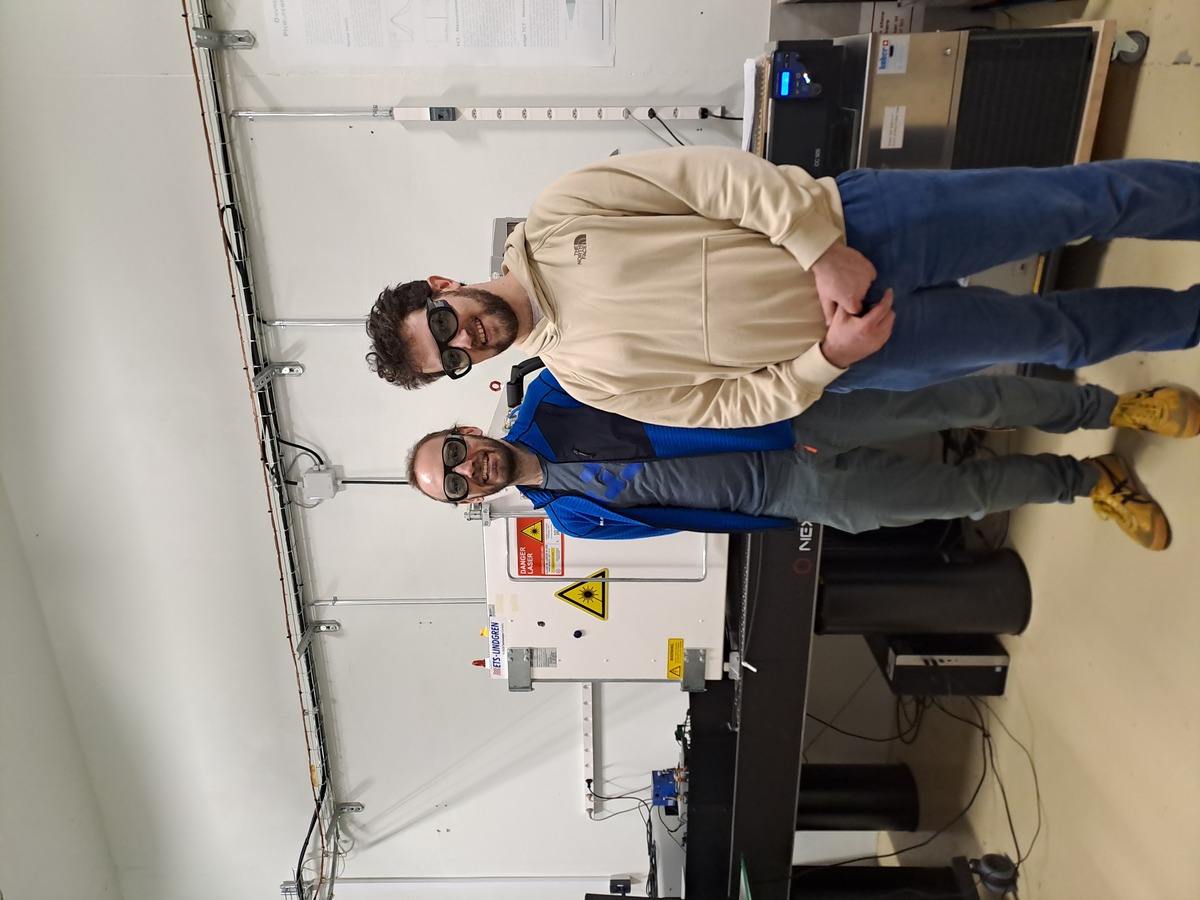Two Photons are better than one
Two Photon Absorption is a powerful new tool for studying silicon sensors. This technique is performed using a long wavelength, infrared laser penetrating into the silicon. Photons with this wavelength do not have enough energy to create electron-hole pairs inside of the silicon. However, when the laser intensity becomes high enough at the focal point, the simultaneous absorption of two photons can occur. Thus, at the focal point of the laser, electron-hole pairs are created.
The Two Photon Absorption Transient Current Technique (TPA-TCT) setup at CERN is one of the first in the world capable of exploiting this process. In this machine, a silicon sensor is moved around the focal point of the laser in order to create a 3D map of the electric field inside of the sensor. Dr. Brendan Regnery (ETP) and Dr. Luca Menzio (CERN) recently used this setup to measure in detail the electric field in next generation silicon sensors. Over the coming weeks and months, they will analyze the results in detail as they continue to study and understand how to best make sensors capable of tracking particles in both time and space.


